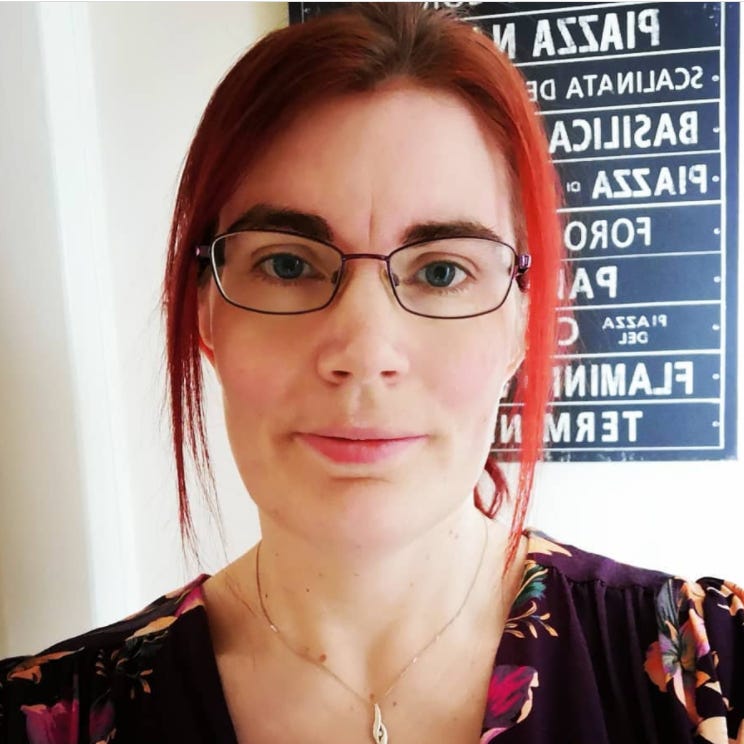Beyond the Archives: Sophie Michell Reconstructs The Lives of Murder Victims
This week we interview Sophie Michell from The Friday Murder Club
We are excited to engage with other Substack creators who write on related issues.
This week we are thrilled to feature Sophie Michell from The Friday Murder Club. Sophie is a crime and death historian working on her PhD at the Open University, where she completed her Masters in local and regional history.
Sophie is mainly interested in the “coroner’s court, women, infanticide and infant mortality, family economics, gendered violence, and the history of medicine”.
We admire the way in which Sophie works to reconstruct the lives of the victims that she studies. In doing so, she redirects attention to them rather than on the perpetrators. Her posts can be harrowing, and yet are marvelously well written and substantiated. These stories allow readers to gain a wider understanding of life, crime, and policing in Victorian England.
We interviewed Sophie and wanted to share her answers with you.
CC: What sparked your interest in your field of study? Was there anything specific?
SM: When I was a child – not a very normal child, it must be said! - I was obsessed with two things: the human body and murder. The anatomy obsession came from a very serious accident when I was five years old, where I almost lost my arm. The murder/true crime obsession came from my mother, who was very interested in serial killers. I loved history, but never considered a career in it as I wasn’t aware you could have a career in it. I didn’t go to uni until I was 27, and that was to study health science. I did a module on history of medicine, which combined with a talent for family history research, motivated me to do an MA in local history. One of the modules in the MA was on digital primary sources, which introduced me to the Old Bailey Online, and then justice history. I accidentally discovered that my local archive had a very good repository of inquest files, which rarely survive. I wrote my MA dissertation on child death at the inquest, found my niche in the infanticide files, and here I am, seven years later, writing my PhD on inquests within the justice system!
CC: Why Substack? What do you hope to achieve here? How do you balance storytelling with academic rigor when publishing?
SM:I have been an avid user of blogging sites and social media since around 2001, so it was a natural progression to use these tools to tell stories when I began my PhD. I used Twitter a lot (and still use Bluesky) but disliked the lack of nuance available in 140 characters or less: you can give the headlines, but not a detailed analysis. Another issue with short-form social media is that your words can be taken out of context and also shared outside the intended audience. I started publishing on Substack rather than my personal website to allow people to opt in to receiving the stories: these stories are not easy reads!
CC: Briefly, tell us what you study and, in your opinion, what is the most pressing issue or the most intriguing unanswered question in your field. Why do you think it matters today?
SM: I study nineteenth-century inquest practice in England and Wales, both as a function of justice and as a community forum. Criminal justice history does tend to overlook inquests, partly because inquest record survival is so patchy, but an inquest was an important aspect of murder investigation until the twentieth century. The inquest is where the narrative of a suspicious death is crafted, ready for testing in the higher courts. Inquests also allowed communities swift, active and personal interaction with the justice system. Understanding inquests allows an unprecedented insight into nineteenth century cultures: it’s not just about the death!
CC: What’s the most surprising or counterintuitive thing you’ve learned in your research?
SM: Autopsies were extremely uncommon. We know that the Victorians had a horror of post-mortems, seeing them as punishment, but it was a shock to discover how few autopsies were done even when the circumstances suggested one would be a good idea.
CC: Are there any historical cases or theories that you believe deserve more attention? Why?
SM: I think it depends on what you want to learn from the past. One thing I try very hard to bring forward in my murder stories is women’s worlds. Most of my stories involve women as victims. So much historical true crime focuses on dead women solely as a dead dress and I try to rebalance this by talking about their families, their friends, and their lives. I want people to realise that women in the past had the same brains as women do now, even though they were confined by poverty, social norms and poor education.
I think the most important element of my writing is demonstrating how, although laws and culture shift, human behaviour does not. Change a few details in these stories and any of them could happen today.
CC: What books, films, or documentaries would you recommend for someone looking to understand your field better?
SM: I am very much a word-person, so I don’t have any films or documentaries to recommend! I have worked on the Lady Killers and Lady Swindlers podcasts, which are accessible via BBC Sounds, and highly recommend them.
For books for the general reader, I do not think you can beat The Five by Hallie Rubenhold, which turns the Ripper murders on their head by considering the life stories of the five canonical victims. Hallie is something of an icon among me and my friends and has a new book coming out shortly about the Crippen murders called The Story of a Murder.
CC: If the public could grasp just one key idea about crime and justice, what would it be and why?
It was really fast! You could kill a man and be executed for it within a month!
CC: Given the historiographical challenges, how do you reconstruct the lives of everyday people who became victims?
SM: Slowly! I am a very experienced genealogist, so once I have found the murder I wish to write about, my first job is to reconstruct the family group involved, getting the basic personal facts in order. I used parish and census records to do this. I also use old maps to pinpoint the geography of the area.
Once I know who I’m writing about, I start with the inquest and creep forward very slowly, and very thoroughly through allthe press reports. This requires a lot of going back and forth, to get the chronology right. With executions, it’s not uncommon for a lot of information to be released once the convict is dead! This, combined with my deep knowledge of working-class social history, usually gives me enough information to be able to talk about the victims’ lives with some authority.
CC: You must find many dark, disturbing, and challenging materials during your research. How do you deal with this work?
SM: I work with violent death all day, every day. I have autism and aphantasia which definitely helps: I don’t see pictures of what I’m reading about in my head! I don’t think I could do this otherwise! However, there are certain cases that stay with me and there’s often an aspect of exorcism in writing about those cases. Writing them up gives me peace, even though the research can be painful.
CC: We think our readers would find your work valuable. Could you recommend 2-3 of your posts?
SM: The story of David Thompson Myers, the last man executed in Peterborough. He was executed for sodomy:
The story of Alice Elliff, who died from neglect. I think this story shows how historic definitions of homicide and intent shift:
And finally, the two-part Nottingham Murders, which examines a family murder and the awful aftermath:
Although my substack is now paid, these posts are all free to access.









